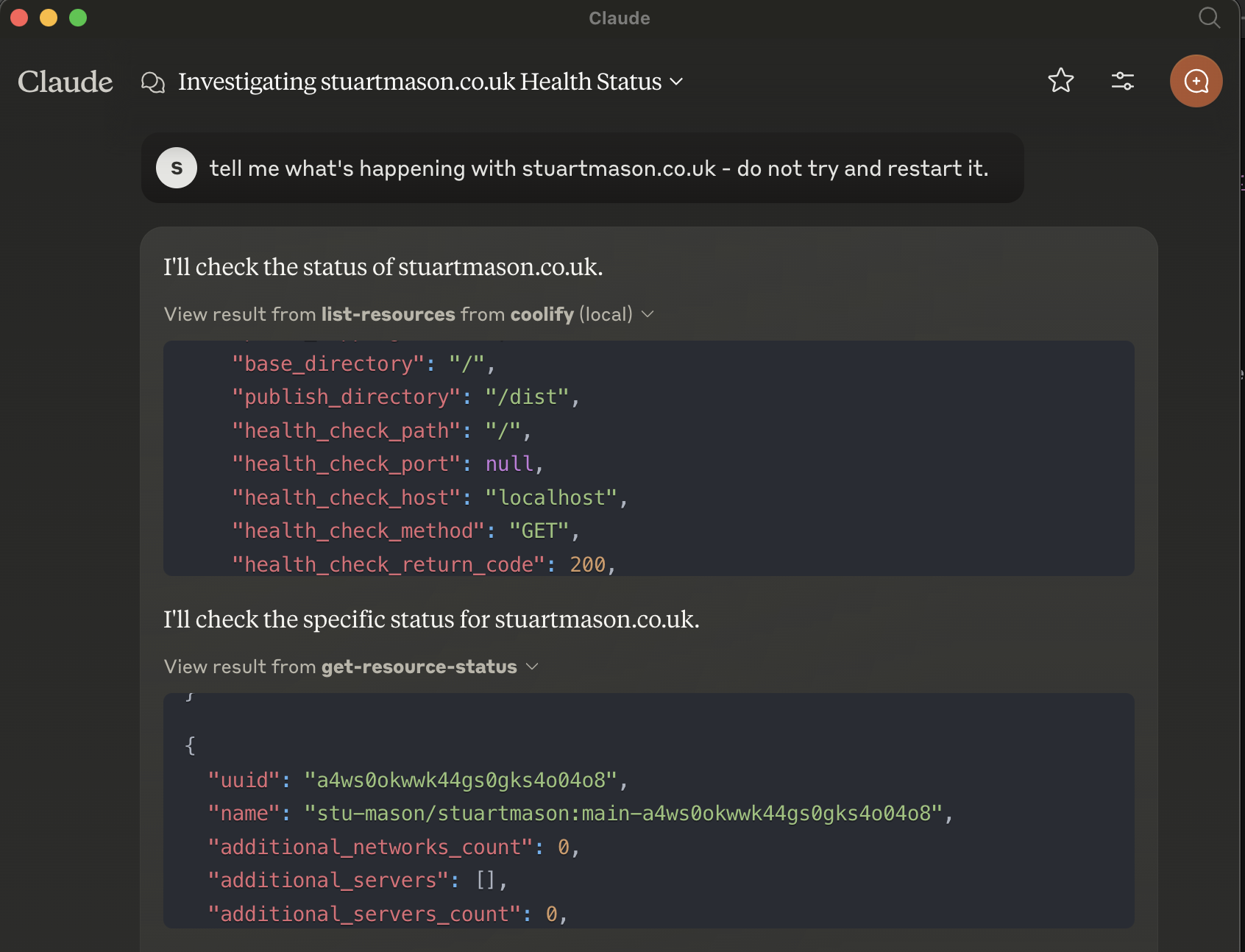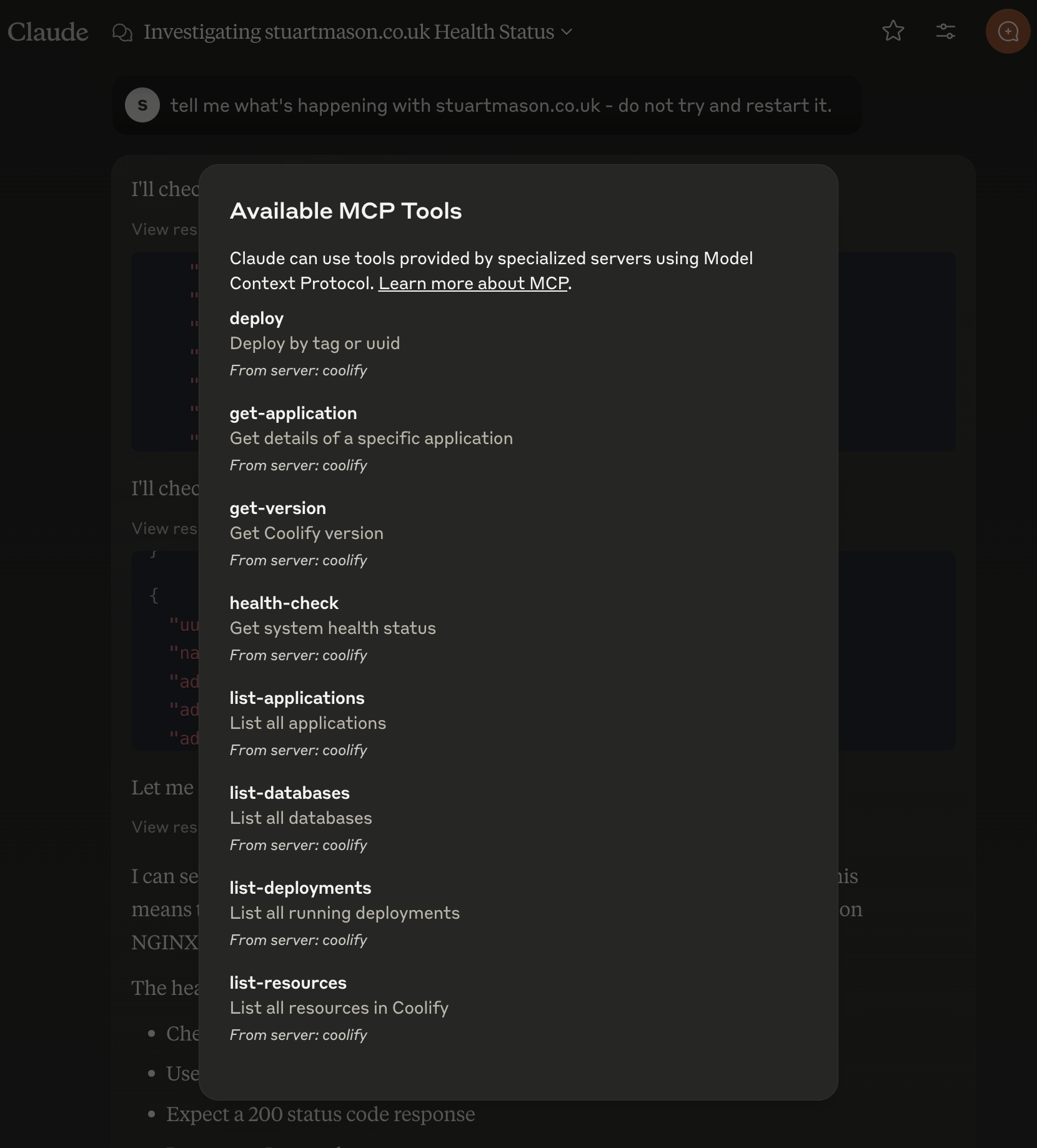Coolify MCP 服务器
概述
这仍处于发展阶段。
Coolify MCP(模型上下文协议)服务器是 Coolify API 的集成层,允许用户通过标准化接口与各种资源和应用程序进行交互。该服务器使用 TypeScript 构建,并利用模型上下文协议 SDK 实现无缝通信。


特征
列出资源和应用程序
获取特定应用程序的详细信息
启动、停止和重新启动应用程序
通过标签或UUID部署应用程序
系统状态健康检查
获取 Coolify API 的当前版本
安装
要设置 Coolify MCP 服务器,请按照以下步骤操作:
克隆存储库:
安装依赖项:
然后运行
创建构建目录。
设置Claude配置:
您需要在claude_desktop_config.json文件中添加类似这样的内容:
API 端点
服务器支持以下操作:
列出资源
请求:
list-resources响应: Coolify 中所有资源的列表。
列出应用程序
请求:
list-applications**响应:**所有应用程序的列表。
获取应用程序详细信息
请求:
get-application参数:
{"uuid": "<application-uuid>"}**响应:**指定应用程序的详细信息。
启动应用程序
请求:
start-application参数:
{"uuid": "<application-uuid>"}**响应:**启动操作的结果。
停止申请
请求:
stop-application参数:
{"uuid": "<application-uuid>"}**响应:**停止操作的结果。
重启应用程序
请求:
restart-application参数:
{"uuid": "<application-uuid>"}**响应:**重启操作的结果。
部署应用程序
请求:
deploy参数:
{"tag": "<tag-name>", "uuid": "<application-uuid>", "force": true}**响应:**部署操作的结果。
获取版本
请求:
get-version响应: Coolify API 的当前版本。
健康检查
请求:
health-check**响应:**系统健康状态。
贡献
欢迎贡献!如有任何改进或错误修复,请创建 issue 或提交 pull request。
remote-capable server
The server can be hosted and run remotely because it primarily relies on remote services or has no dependency on the local environment.
Tools
通过标准化接口通过Coolify API实现与Coolify应用和资源的交互,支持列出、启动、停止、重启、部署等应用管理操作。
Related Resources
Related MCP Servers
- -securityFlicense-qualityA Model Context Protocol server that enables AI assistants to interact with Coolify instances through natural language, allowing management of servers, applications, databases, and deployments.Last updated -7951
- -securityFlicense-qualityA Model Context Protocol server that provides integration with the Coolify API, enabling DevOps teams to manage Coolify deployments, applications, services, and servers through MCP tools.Last updated -2921
- -securityAlicense-qualityAn MCP server that enables AI assistants to manage infrastructure, applications, databases, and services through the Coolify PaaS platform.Last updated -12MIT License
- AsecurityFlicenseAqualityProvides programmatic and CLI tools for managing Coolify deployments, allowing users to control applications, services, databases, and infrastructure through natural language or command line.Last updated -10264